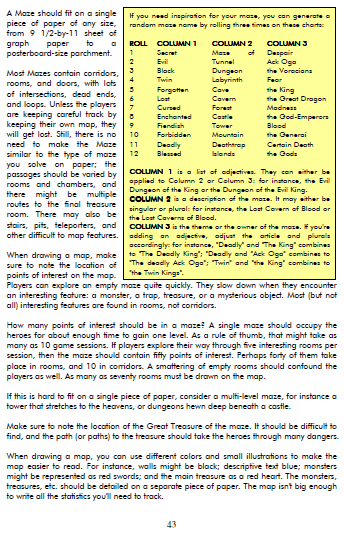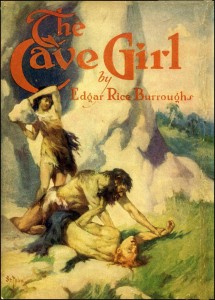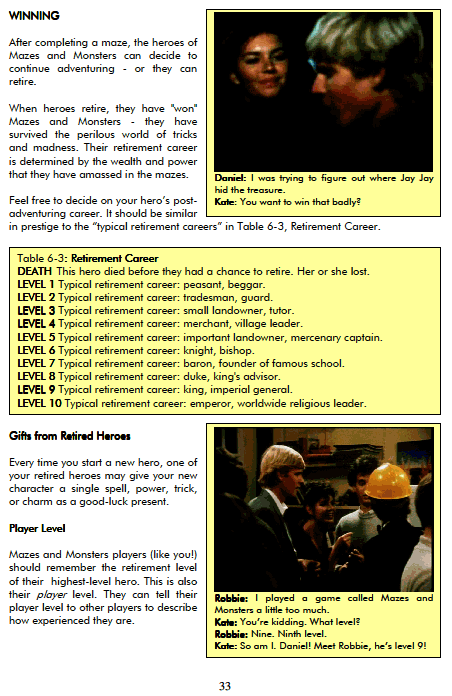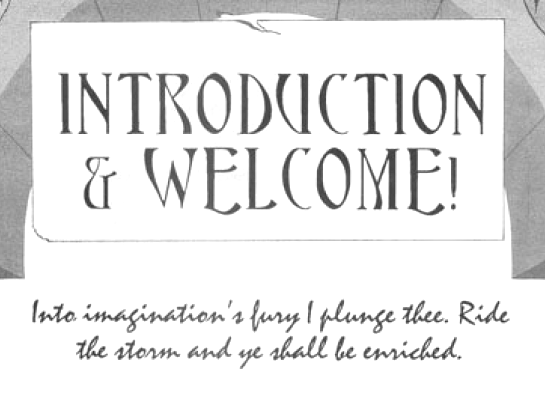…and tricks and powers. Here are 14 of them.
I changed the way the Mazes and Monsters magic system works. Spells, Tricks, and Powers are now much more differentiated from each other. The changes were based on my RIGOROUS RESPECT FOR TEXTUAL EVIDENCE, not whimsy.
Spells: Rory, who read the novel, told me that in one scene, spells were referred to as one-shot items, like scrolls. Now spells are fire-once items, available to any class, as opposed to tricks and powers, which are learned permanently, and class-specific.
Powers: I originally had powers be unique to Holy Men, but I’d forgotten that Jay Jay says his Frenetic has “tricks and powers to take him far and keep him safe.” Now, Frenetics and Holy Men both have access to powers: healing powers are still unique to Holy Men, and I’ve added some tricky powers, like Sonar, for Frenetics. Some powers can be used by both classes.
Tricks: To make Tricks unique, I made them work a little bit like Blue Magic from Final Fantasy: Frenetics learn them by harvesting items from defeated enemies. This adds a form of treasure that the Maze Controller doesn’t have to worry about placing. It also adds another income source: every time you kill a Dragon, you can harvest its magic tooth and sell it in town.
Here’s Page 37, which contains half of the Tricks (along with the monsters they’re stolen from).
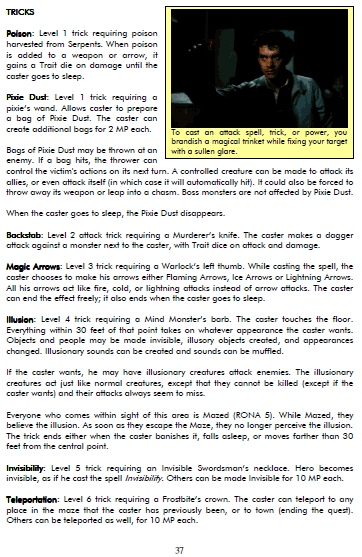
Click for larger PDF version of this page
Here’s page 39, which contains half of the Powers.
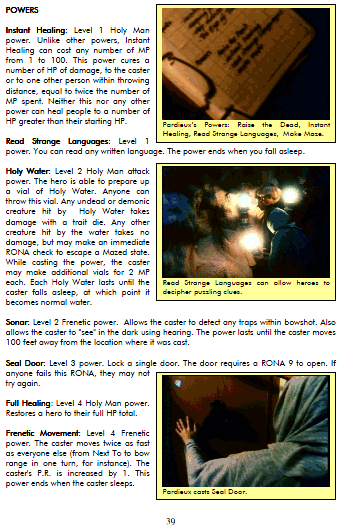
Click for larger PDF version of this page

